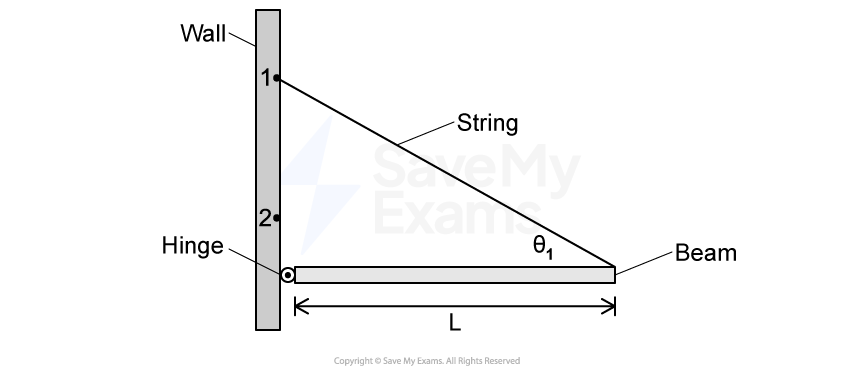
Figure 1
The left end of a uniform beam of mass and length
is attached to a wall by a hinge, as shown in Figure 1. One end of a string with negligible mass is attached to the right end of the beam. The other end of the string is attached to the wall above the hinge at Point 1. The beam remains horizontal. The hinge exerts a force on the beam of magnitude
, and the angle between the beam and the string is
.
The following rectangle represents the beam in Figure 1. On the rectangle, draw and label the forces (not components) exerted on the beam. Draw each force as a distinct arrow starting on, and pointing away from, the point at which the force is exerted.

Did this page help you?










